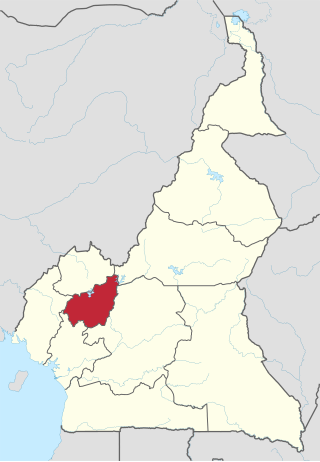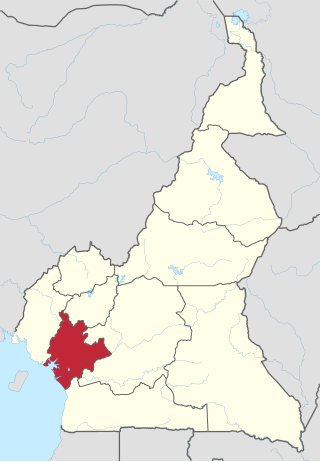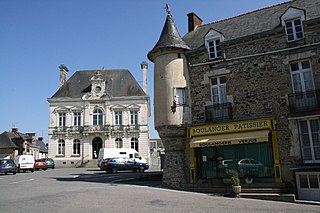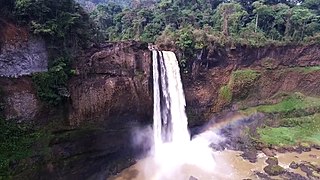
Doubs is a department in the Bourgogne-Franche-Comté region in Eastern France. Named after the river Doubs, it had a population of 543,974 in 2019. Its prefecture is Besançon and subprefectures are Montbéliard and Pontarlier.

Ille-et-Vilaine is a department of France, located in the region of Brittany in the northwest of the country. It is named after the two rivers of the Ille and the Vilaine. It had a population of 1,079,498 in 2019.

Loire-Atlantique is a department in Pays de la Loire on the west coast of France, named after the river Loire and the Atlantic Ocean. It had a population of 1,429,272 in 2019.

The West Region is 14,000 km2 of territory located in the central-western portion of the Republic of Cameroon. It borders the Northwest Region to the northwest, the Adamawa Region to the northeast, the Centre Region to the southeast, the Littoral Region to the southwest, and the Southwest Region to the west. The West Region is the smallest of Cameroon's ten regions in area, yet it has the highest population density.
Basaa, or Mbene, is a Bantu language spoken in Cameroon by the Basaa people. It is spoken by about 300,000 people in the Centre and Littoral regions.

The Littoral Region is a region of Cameroon. Its capital is Douala. As of 2004, its population was 3,174,437. Its name is due to the region being largely littoral, and associated with the sea coast.

Bana is a sub-prefecture and commune in the West Province of Cameroon, some 8 km east of Bafang and 2 km south-west of Babouantou.
Kako is a Bantu language spoken mainly in Cameroon, with some speakers in the Central African Republic and the Republic of the Congo. The main population centres of Kako speakers are Batouri and Ndélélé in the East Region of Cameroon.

Janzé is a commune in the Ille-et-Vilaine department in Brittany in northwestern France. It is also the seat of the Canton of Janzé. The inhabitants of Janzé are called Janzéens in French.
Mafa is an Afro-Asiatic language spoken in northern Cameroon and Northern Nigeria by the Mafa people.

Bata (Gbwata) is an Afro-Asiatic language spoken in Nigeria in Adamawa State in the Numan, Song, Fufore and Mubi LGAs, and in Cameroon in North Province along the border with Nigeria. Dialects are Demsa, Garoua, Jirai, Kobotachi, Malabu, Ndeewe, Ribaw, Wadi, and Zumu (Jimo). It is often considered the same language as Bacama.

Nkam is a department of Littoral Province in Cameroon. The department covers an area of 6,291 km2 and as of 2001 had a total population of 66,979. The capital of the department lies at Yabassi.
Bazou is a town and commune located in the West Region of Cameroon. The town consists of 63 villages, and is one of the three subdivisions of the department of Ndé. Covering around 250 km2, it is located on the high plateau of Bamileke, 950–1400 m above sea level. The name Bazou comes from the Baze expression for walking because of the long migratory marches caused by frequent internal conflicts.
Santchou is a town and commune in Cameroon.

Misaje is a town and commune in Donga-Mantung department in the Northwest Region of Cameroon. The town lies at the top of the Ring Road, about 15 kilometers west of Nkambé, where the Ring Road meets the road north to Dumbu and the border with Nigeria.
Kogo, also referred to as Bakoko and Basoo, is a Bantu language of Cameroon. North and South Kogo are as distinct from each other as they are from Basaa; they might be considered three dialects of a single language.
Simon Tchobang Tchoya was a Cameroonian football goalkeeper who played for Cameroon in the 1982 FIFA World Cup. He also played for Eclair Douala, Avion Entrelec Douala, Dynamo Douala and Dihep di Nkam Yabassi.
Ndemli, or Bandem, is a language of Cameroon spoken primarily in the Nkam department of the Littoral Region; between Yabassi, Yingui and Nkondjock. Recent classifications such as Nurse (2003) place it in with the Narrow Grassfields languages, though Ethnologue does not reflect this. Ethnologue states that it is "related to Tikar" and that "the Bandobo dialect of Tikar is very similar to Ndemli", though it is not clear if Bandobo actually is Tikar.
Kwakum is classified as belonging to the Bantu subgroup A90 (Kaka) of the Zone “A” Bantu languages, and specifically labelled A91 by Guthrie. According to one of the newest updates to the Bantu classification system, other languages belonging to this subgroup are: Pol (A92a), Pɔmɔ (A92b), Kweso (A92C) and Kakɔ (A93). The Kwakum people refer to themselves as either Kwakum or Bakoum. However, they say that the "Bakoum" pronunciation only began after the arrival of Europeans in Cameroon, though it is frequently used today. Kwakum is mainly spoken in the East region of Cameroon, southwest of the city Bertoua.

Melong is a community in Cameroon. It lies on the N5 road to the north of Nkongsamba. The soil is volcanic and fertile. The country around Melong was once covered by thick rainforest, the native population are Mbo'o, a group of Sawa people who are established in the Littoral and South West Region of the Country. The community is made up of many villages like Melong Center, Mouanguel, Mbouroukou, Mboussoum, Mankwa, and Nsanke. Melong is a volcanic area and very favorable for agriculture. From here it is possible to visit the twin Manengouba lakes, and waterfalls from Ekom on the River Nkam.












